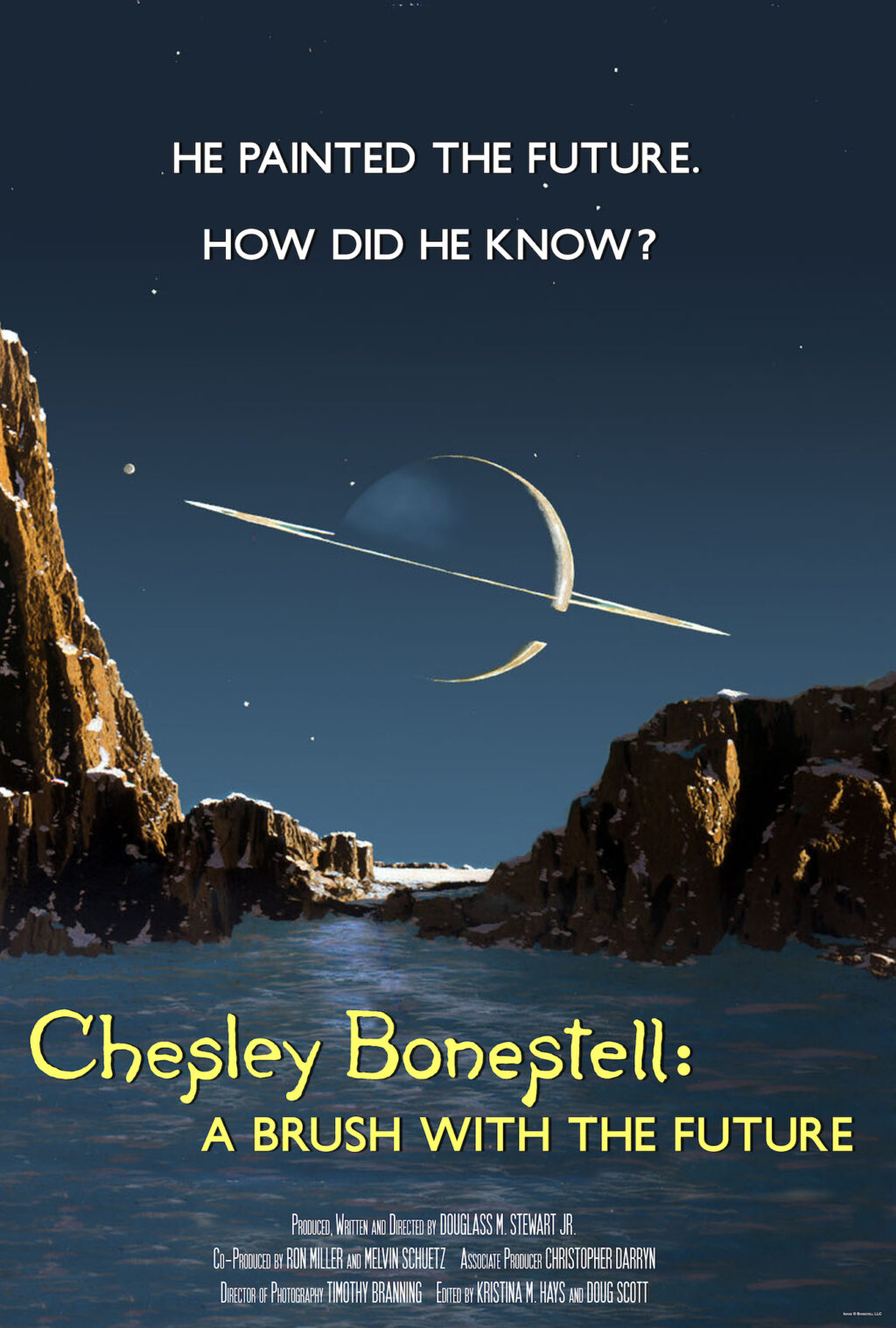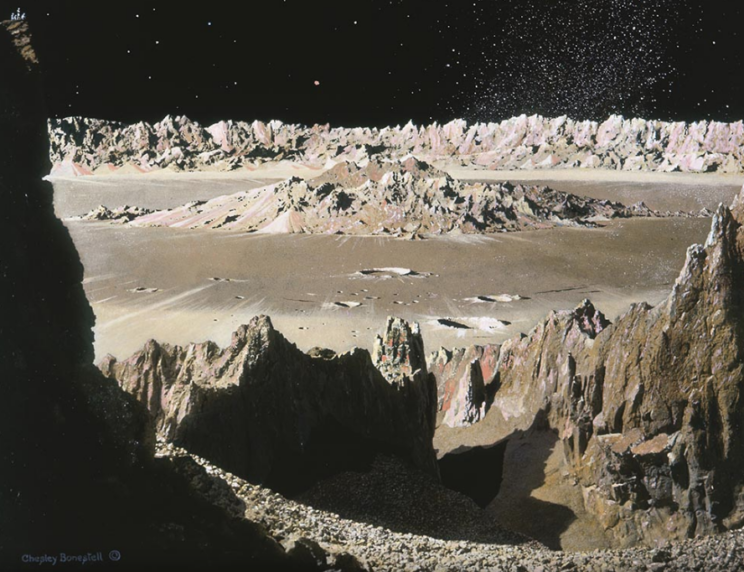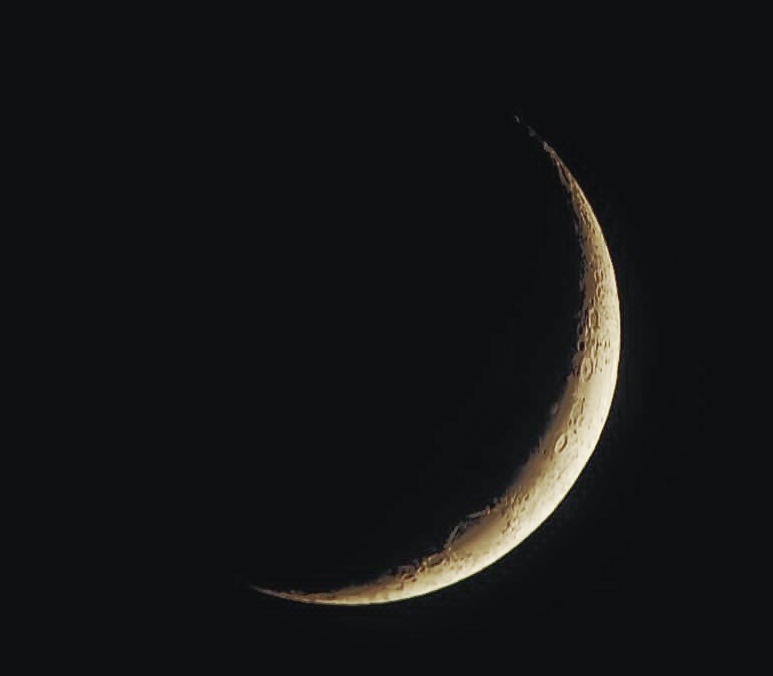- This event has passed.
[USA] Chesley Bonestell and the Moon
July 17, 2022 @ 13:00 – 16:00

July 17, Online
Chesley Bonestell (1888-1986) is the man who got us to the Moon, not with technology but with a paintbrush! His amazing paintings and extraordinary life are chronicled in the award-winning documentary film: Chesley Bonestell: A Brush With The Future.
FIRST: Watch the Trailer here: https://www.chesleybonestell.com/trailer.html
NEXT: Stream the documentary (there may be a nominal charge):
https://www.chesleybonestell.com/streaming-vod.html
THEN: Join a special International Moon Day webinar discussion about the film with Producer/Writer/Director Douglass M. Stewart, Jr. and Co-Producer Ron Miller.
This event will happen on Zoom on July 17, 2022. Time 1:00 PM PDT / 4:00PM EDT
Zoom registration link:
https://us02web.zoom.us/webinar/register/WN_bXxO3rdcRBWRvq94Vacwuw
Youtube stream:


About the Film
The classic space artist, Chesley Bonestell, born in San Francisco in 1888, had a special relationship with the Moon. It was the subject of some of his first published space art back in the 1940s and continued to figure in his art until his death in 1986.

In addition to scores of paintings for nationally published magazines such as Life, Bonestell contributed to books such as The Conquest of Space, Man and the Moon, Rocket to the Moon, Across The Space Frontier and Conquest of the Moon. The latter was a spin-off of a series of articles on the future of space exploration created by Wernher von Braun and a team of experts for the popular magazine, Collier’s. Its elaborate vision of a lunar expedition and lunar base—illustrated by Bonestell—has been widely credited with spurring the development of America’s fledgling space program. Bonestell’s contribution to immensely popular movies such as Destination Moon (1950) and the effect they had on the public perception of space travel cannot be discounted, either.

Bonestell was also almost single-handedly responsible for the popular impression of the Moon as being dominated by craggy, Alpine-like peaks. While proven mistaken by the astronauts of the Apollo program, there is a viable argument to made that Bonestell knew exactly what he was doing and had it not been for his dramatic renderings of the lunar landscape public enthusiasm and support for the exploration of the Moon would have been far less.
Bonestell’s artwork was ubiquitous throughout the 1940s and 1950s. It not only appeared everywhere, from books and magazines to television and movies, it influenced hundreds of other illustrators who spread the Bonestellian vision of the Moon and future spaceflight. His work even had a profound effect on the depiction of the Moon in Stanley Kubrick’s futuristic epic, 2001: A Space Odyssey (1968).

The award-winning film, Chesley Bonestell: A Brush With the Future, is the first-ever documentary about the “Father of Space Art.” It includes interviews with those who knew Mr. Bonestell or were influenced by his art. Featured in this film is rare commentary by author Ray Bradbury and Douglas Trumbull (photographic effects supervisor for 2001, A Space Odyssey) who explain how this extraordinary artist popularized the idea of traveling to the Moon, exploring and colonizing it. Bonestell, through his art, helped lay the groundwork for not only our modern space program but for both public and official support and interest in exploring the Moon. Now, with the Artemis program poised to return humanity to the Moon, we can be grateful for the inspiration of a gentle artist whose extraordinary vision took us there decades ago.
For more information about Chesley Bonestell and this first-ever documentary on the “Father of Space Art” please visit the film’s website:
Bonestell paintings courtesy Bonestell LLC. “A Lunar Landscape” courtesy Smithsonian National Air and Space Museum.

